Reduce Media Waste
Brands are facing a new environment of a decrease in marketing budgets, leading to a need to achieve more with less. There is also an increased need to justify the spending or increased scrutiny of actual business results.
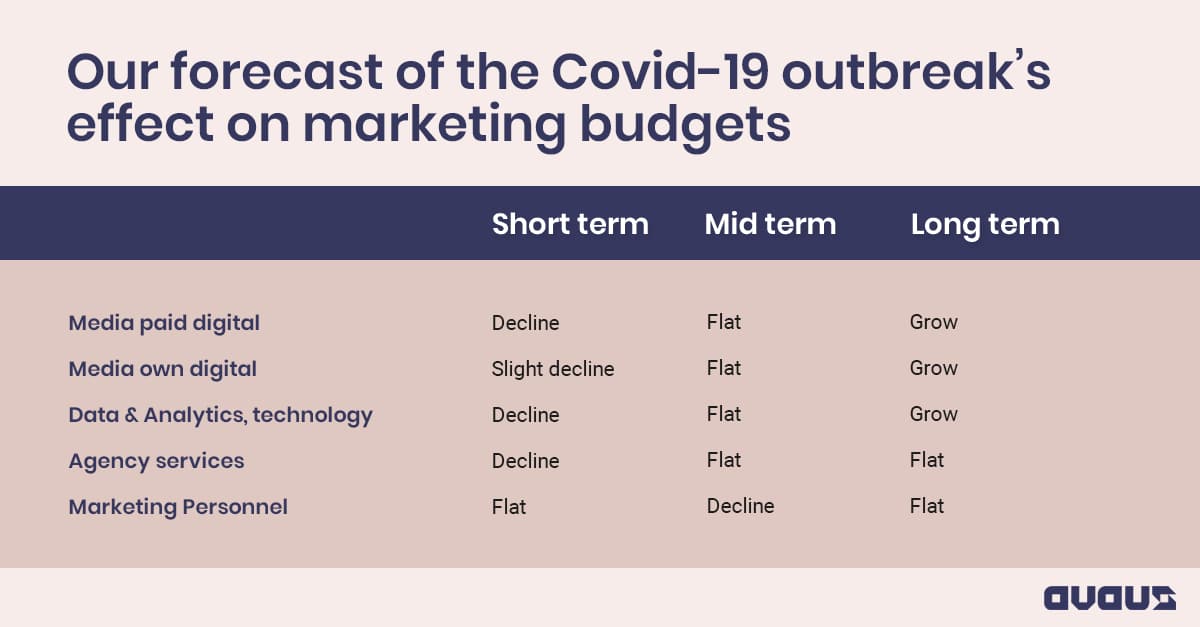
Adjusting to this will require a restructuring of marketing. Cutting into just some of your spending lines may not be sufficient to deliver the savings. Cutting into all of them will make it hard to deliver on your core marketing objectives. This is why the current situation calls for a reorganising of which marketing you do as well as how your marketing is done.
Make Better Use of Buying Platforms
Much can be done by reducing waste in campaign structures, and without any additional technology or cost. Brands still plan and buy digital media as if it was traditional media. Campaigns are booked in the buying platform with a set time interval and budget, and when the campaign is done the booking logic is discarded.
Instead of discreet campaigns, digital campaign structure should be seen as a machine learning model. From an ML standpoint, it is wasteful to throw away a trained model and the associated data, only to re-train a model on the same objectives for the next campaign.
The solution is to build campaigns as models for a specific product category, initiative and optimisation goal. The models can subsequently be continuously trained and re-used which will ultimately reduce waste and improve efficiency.
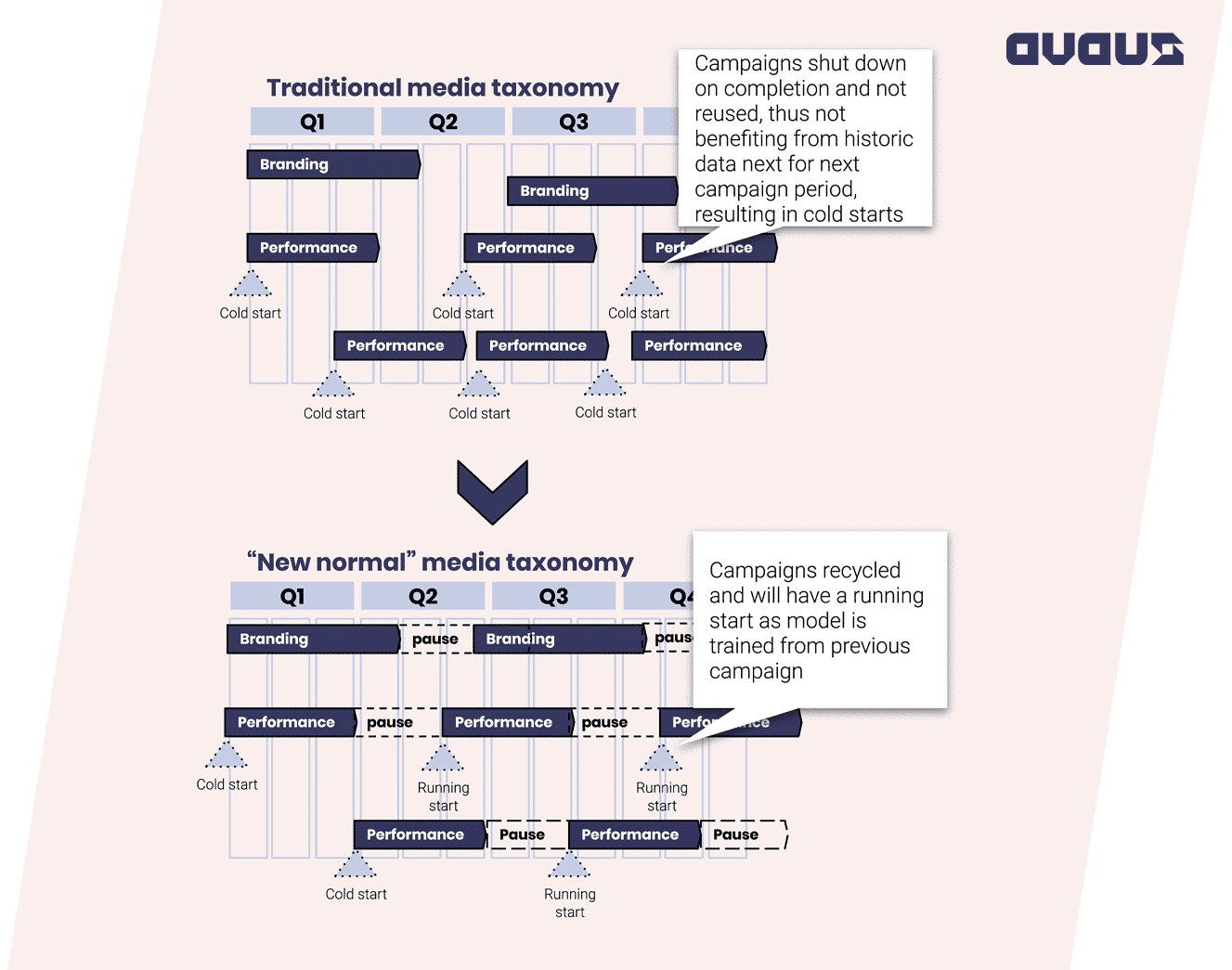
The objective is to build persistent systems within your media plan which allow you to continuously add data to the same models and reduce costly replication.
Improve Your Operating Model
Building persistency into campaign structures can be enhanced by moving towards an iterative operating model. Google’s “Performance Engine” is a good representation of this.
By combining four processes, significant performance improvements can be achieved:
1. Set the objectives, and establish measurable KPIs. The goal is to have a direction that top management can support, but optimally with KPIs which can directly be linked to your purchasing algorithms. It is useful if the objectives and KPIs also have a financial expression, as profitability is now such a common question.
2. Add the data that will fuel your algorithms to optimise targeting. This is the data-engineering phase, which is commonly one of the principal cost elements and, done correctly, a great potential source of financial savings.
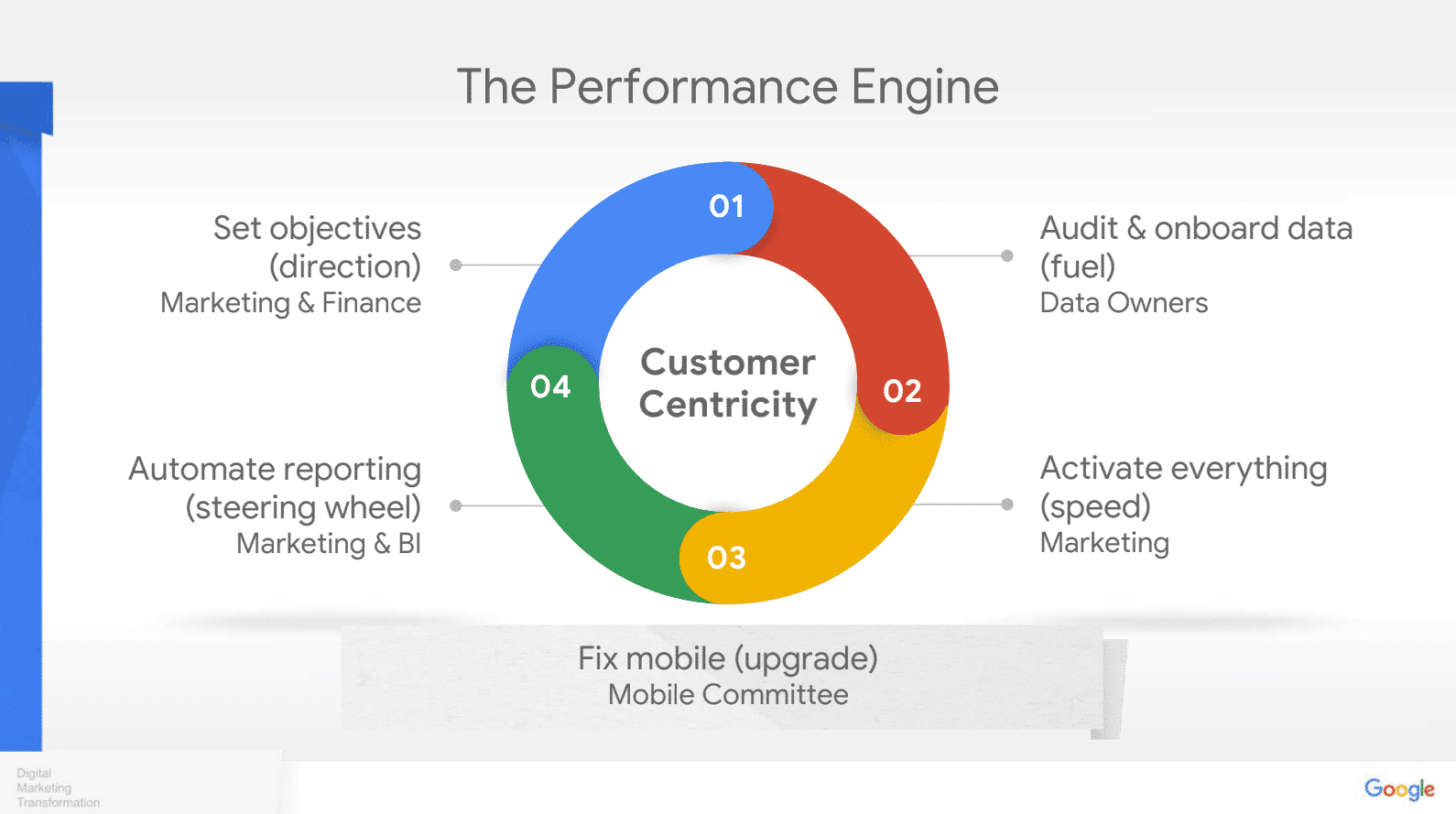
3. If you can prove profitability for your initiatives, why limit yourself to only a few products or a single market? Digital buying platforms enable you to address any market with all of your products and services, even if you only have a team based in one market. Much of these possibilities are thanks to the evolution of product feeds & dynamic creatives.
4. Identifying and measuring results, reporting on the KPIs is the fourth step. This ensures that focus is maintained on the objectives as well as on the profitability of the operation. Linking the KPIs into Business Intelligence reporting will secure continuous buy-in from top management and will likely help secure budgets. Evaluating the results should then be further linked to a potential revision of objectives, where necessary, feeding a new cycle of the performance engine.
Create Data Assets
Limiting your data to only what media tags collect from your site is suboptimal. This should be enhanced by uploading segmented lists of your customers, what Google terms “customer match”. This allows you to target your best, or worst customers, or offline converts, or any other segmentation you define. It also facilitates creating customer lookalikes to extend your audience.
Uploading your own lists to match against Google or Facebook users is not an exercise in technology – it is mainly an operational challenge. It requires engaging multiple stakeholders and interfacing with multiple data silos, and it typically involves a lot of touch-points and manual work.
Increasing the automation of these processes and eliminating the manual stages in data procurement and processing is generally an area where significant efficiency gains and cost savings may be achieved.
The benefit of creating automated data assets is the ability to lower acquisition cost and reduce waste by focusing on look-alike audiences of your existing best customers. This can have a significant effect on your return on ad spend (ROAS), especially if it is backed up by robust CLV analysis. Additional benefits include faster response times, better adaptability and improved data security.
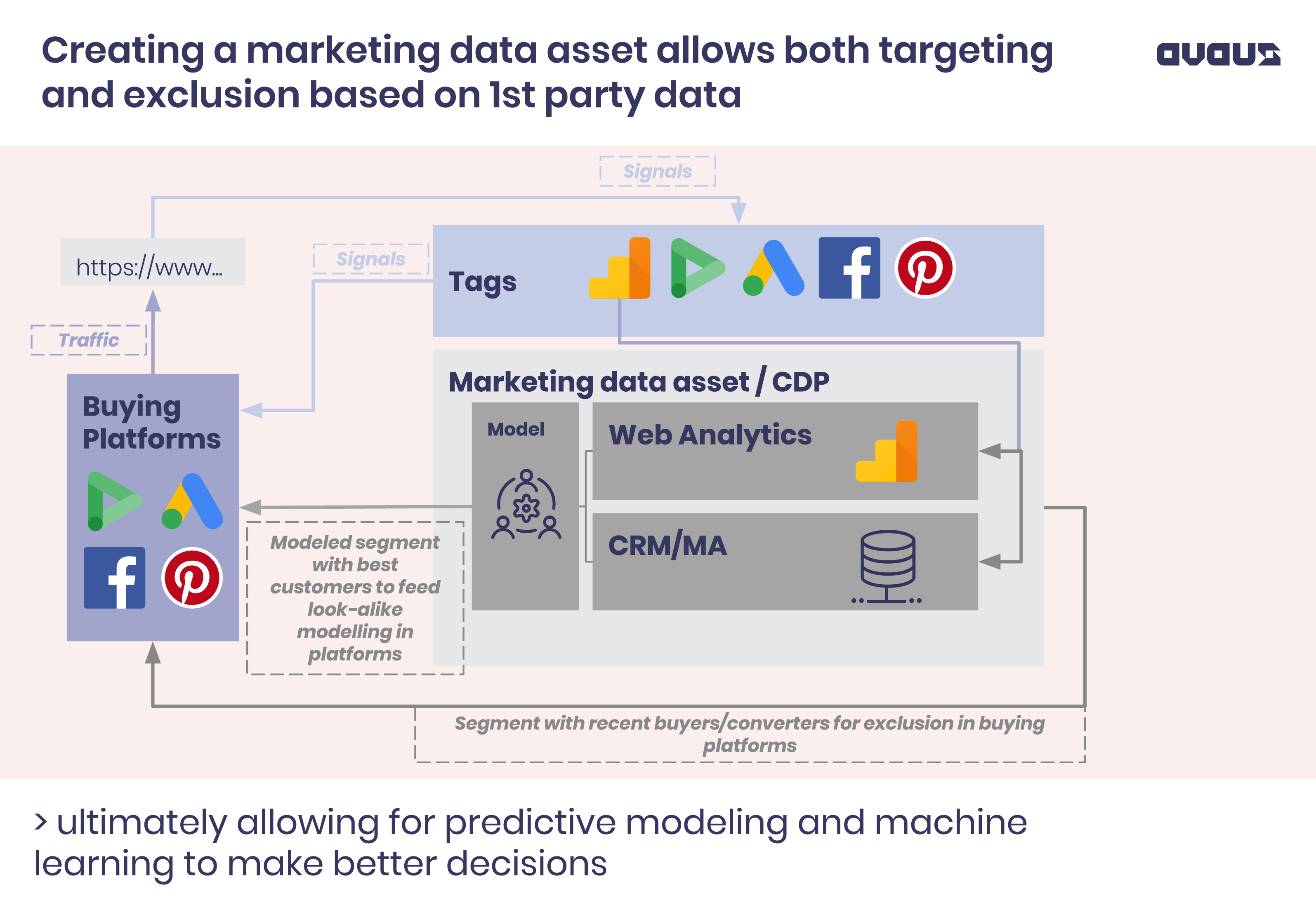
Add Intelligence to Bought Media
Adding intelligence to your bought media allows you to push your performance and take things beyond the inevitable thresholds that companies run into. Intelligence refers to developing your own algorithms and models to drive your marketing decisions.
This could involve predicting customer lifetime value (CLV) based on Google Analytics data, segmenting the customers into audiences based on the predicted value and then extending those audiences with lookalike modelling. Algorithms may, for instance, be rules in Google Ads to increase your bid on users with a high predicted value and lower your bid on the users with lower predicted value. This is something which is now becoming customary, as was evident in multiple case studies presented at the recent Google Transform conference.
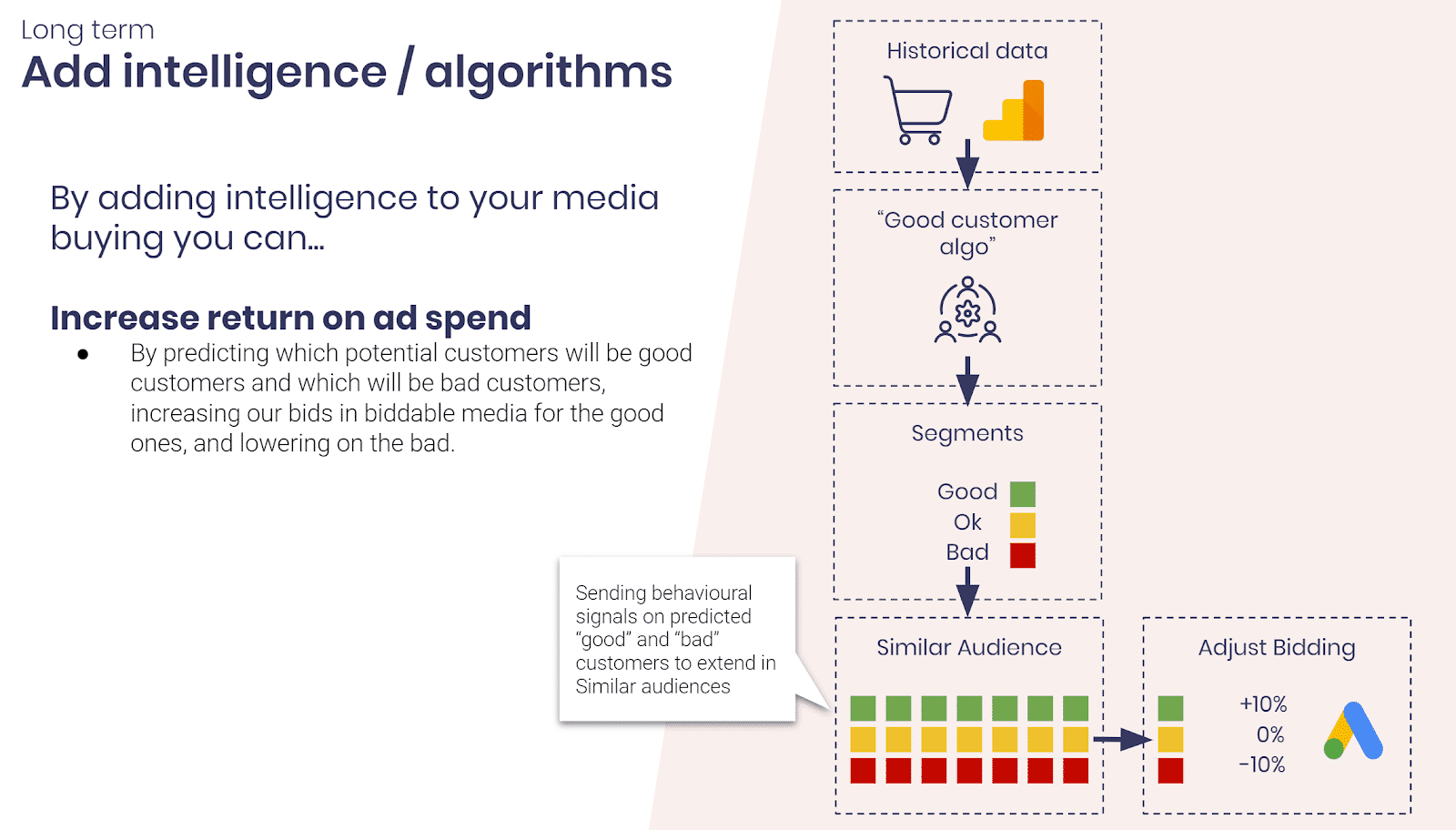
Google Cloud service BigQuery facilitates extracting row-level user data from Google Analytics, which is highly useful in these kinds of use-cases. The web analytics data can be leveraged across various customer models and fed into multiple algorithms. With the algorithms and models in place, it becomes relatively straightforward to have the results feedback into Google Analytics and Google Ads, completing the loop.
Introducing data-driven modes and implementing algorithmic media buying is not only possible in Google Ads, even if it is one of the principal digital channels. The same tools and processes can be leveraged across platforms such as Facebook, Ad form, Adobe etc. The purpose of adding intelligence to your media buying is to allow you to achieve more with less, which is platform-independent.
Wrapping Up
Now is the right moment to prepare your media buying for the new normal. A first step is to talk to your agency partners to verify that they fully utilise the buying platforms’ machine learning functionality. Subsequently, start looking into adding extra fuel to your performance machine by piping it with first-party data. Finally, work to add intelligence to your media buying process by including your own algorithms and models.
The steps can be done independently but they build on and benefit from each other. The virtual circle is that the more data you can introduce, the more you will have scope to refine the algorithms, which in turn will create even more and better data for you to work with.
Start Growing With Media Purchasing
Go to downloadables to see how our experts in Avaus can help your business grow.
All downloadablesContact us